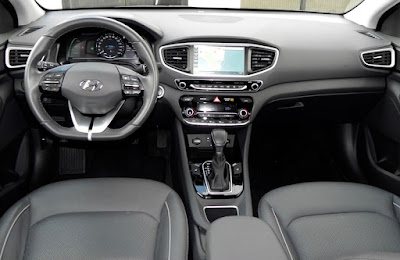YES, A MUSCLE CAR CAN HAVE FOUR DOORS; DODGE CHARGER DAYTONA SHOWS IT CAN!
Muscle Car aficionados and automotive purists may have been unhappy when Dodge resurrected the Charger as a four-door sedan instead of the two-door coupe from the 1960s and ’70s, but a little over a decade later, it seems to have worked out just fine.
The Charger in four-door form is the brand’s best-seller among coupes and sedans and actually is outselling the Durango crossover so far in 2017. Dodge reported sales of 9,230 Chargers for September to 6,207 for the Durango.
For the year to date, the Charger was holding a nearly 15,000 advantage in sales over the Durango through September.
With the Charger in four-door form, buyers who really want a Muscle Car but need transportation for the family have an easy decision.
They can have both!
As a full-size sedan, the Charger offers such family family features as a nice-sized trunk (16.5 cubic feet), room for three in the backseat (and two rear doors to give them easy access back there), and a 5-star overall safety rating from the government.
In SE or SXT trim, the Charger comes with a V6 Pentastar engine rated at 292 horsepower and 260 pound-feet of torque, which is adequate for most everyday driving situations.
Call it the Clark Kent version.
But move up to V8 power, and the Charger becomes Superman.
The 2017 Dodge Charger Daytona I recently had the opportunity to drive for a week (yes, the name is taken from the Daytona 500; a Dodge Charger Daytona was the first stock car to break 200 mph, though it was at Talladega, not Daytona) is in the middle of the Charger lineup but definitely leans toward Muscle Car. It will take a nano-second after you push the star/stop button and those deep bass exhaust notes emanate from the rear to convince you of that.
Hey! Does this thing have a HEMI?
Of course, it does!
The Charger Daytona (and R/T trim) gets a 5.7-liter HEMI V8 that sends 370 horsepower and 395 pound-feet of torque to the rear wheels via an 8-speed automatic transmission with optional Sport mode or paddle shifters for manual gear selection. (All-wheel drive is optional on SE and SXT models.)
Not enough power?
You can always opt for the 6.4-liter HEMI V8 (485 hp, 475 lb.-ft. of torque) standard in the R/T Scat Pack, Daytona 392 and SRT 392 trims or the 6.2-liter supercharged beast (707 hp/650 lb.-ft.) in the Hellcat.
Too much of a fuel eater?
Well, the 5.7L V8 in the Daytona features what Dodge calls “fuel saver technology” that turns theV8 engine into a 4-cylinder operation when cruising at highway speed or operating under light conditions. That doesn’t make the Charger a Prius hybrid, but it does make for slightly better mileage (16 miles-per-gallon city, 25 highway, and 19 combined) than you might expect.
Recommended fuel is 89 octane for the 5.7-liter V8, though the company says regular is acceptable. (The V6 runs on regular 87 octane; premium 91 octane is recommended on the 6.4L V8, and the Hellcat V8.)
Obviously, with power numbers like those above, you’re never going to be lacking for punch when it comes to performance. But in addition to the straight-line get-up-and-go, the Charger handles corners well while delivering a firm, but not overly stiff ride, that has good road manners.
Some Muscle Cars can take, well, muscle to maneuver, but not the Charger. You may get the impression the Charger Daytona is about a half-acre wide when you look over the flat hood, which includes huge HEMI lettering over the large functional hood scoop, but it doesn’t drive that big.
Still, it is a full-size sedan, so the front especially is roomy, and the backseat offers just over 40 inches of legroom.
The Daytona also gets some extra styling touches, like heated and ventilated sport, suede/leather seats with “Daytona” embroidered on the backrests, special floor mats, a performance steering wheel, and extra stitching on the seats and door panels.
It’s not a luxurious interior, but is functional and nicely laid out.
The exterior, too, gets attention with prominent “Daytona” and “HEMI” markings and badges in several prominent spots (including the front grille), 20-inch black forged aluminum wheels, and a satin black performance spoiler.
There’s no mistaking this car when you are coming down the street either visually or audibly.
All that does come with a cost, though. You can get into a base Charger SE for just over $29,000 (when destination and delivery charges are thrown in), depending on your negotiating skills, of course. The Daytona with the 5.7-liter V8 starts at $40,985 and gives you pretty much all the fun that the Hellcat does for nearly $29,000 less.
The Daytona 392, which has the 6.4-liter V8, has a listed MSRP of 46,095, which is close to the listed $46,315 that was listed on the Monroney sticker for my test Daytona.
I will say that a price topping the $40,000 mark is rare territory for a Dodge, but if you're looking for performance in a full-size sedan/Muscle Car, the Charger is hard to beat.
What I liked about the 2017 Dodge Charger Daytona: The fun-to-drive quotient is pretty much off the char. I also liked he optional UConnect 8.4 Nav system for the simplicity of its operation.
What I didn't like about the 2017 Dodge Charger Daytona: Rear vision is somewhat restricted. The interior, while not bad, could use a bit more refinement.
Would I buy the 2017 Dodge Charger Daytona? Yes. It's a bit on the expensive side, but if you're considering a Charger, this is no time to skimp.











































